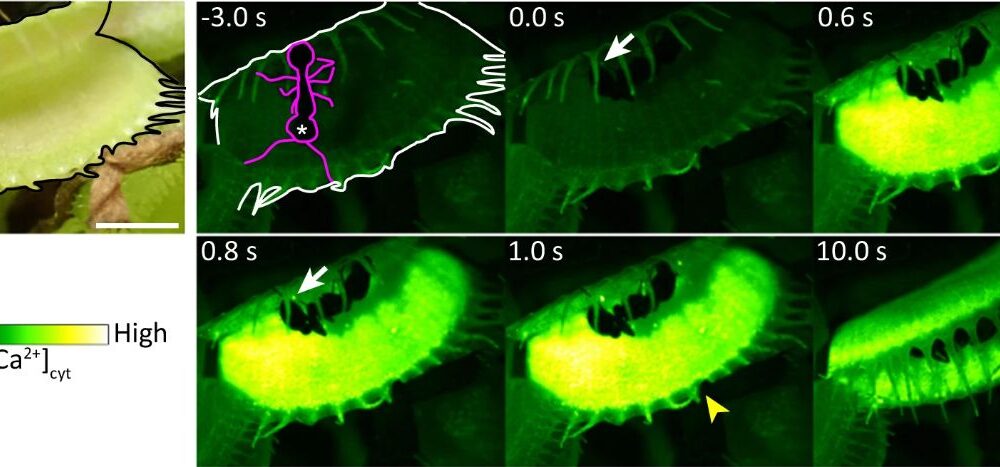Scientists have uncovered the mechanism that enables the Venus flytrap (Dionaea muscipula) to respond swiftly to prey. A study published in Nature Communications by a team led by Hiraku Suda reveals the role of a mechanosensor known as DmMSL10 in this remarkable process. This discovery enhances our understanding of how certain plants have evolved to capture prey effectively.
The Venus flytrap, along with other carnivorous plants like the waterwheel plant (Aldrovanda vesiculosa), possesses specialized sensory hairs that detect movement. These hairs trigger a rapid response using calcium threshold signals. While the basic concept has been known, the precise workings of this mechanism remained unclear until now.
The research team conducted experiments by breeding a variant of the plant lacking the DmMSL10 mechanosensor, which is a stretch-activated chloride ion (Cl–) channel. The study revealed that while both the wild-type and knockout variants of the Venus flytrap responded to mechanical stimulation, their action potential generation rates differed significantly. The wild-type continued to generate action potentials even after stimulation ceased, while the knockout variant showed a markedly reduced response.
To further illustrate this finding, the researchers allowed ants to wander on the leaves of both plant types. The wild-type Venus flytrap successfully captured the first ant, whereas the knockout variant remained unresponsive, failing to generate the necessary calcium signal to close its trap, even after multiple attempts.
These findings suggest that DmMSL10 is essential for the processing of subtle stimuli, allowing the plant to detect prey efficiently. Understanding this mechanism not only sheds light on the Venus flytrap’s unique adaptations but also raises questions about the evolutionary parallels between plant and animal sensory systems.
Future research will likely delve deeper into how such mechanisms evolved and their implications for our broader understanding of plant biology. The insights gained from this study could inform fields ranging from ecology to bioengineering, highlighting the intricate relationship between plants and their environments.






